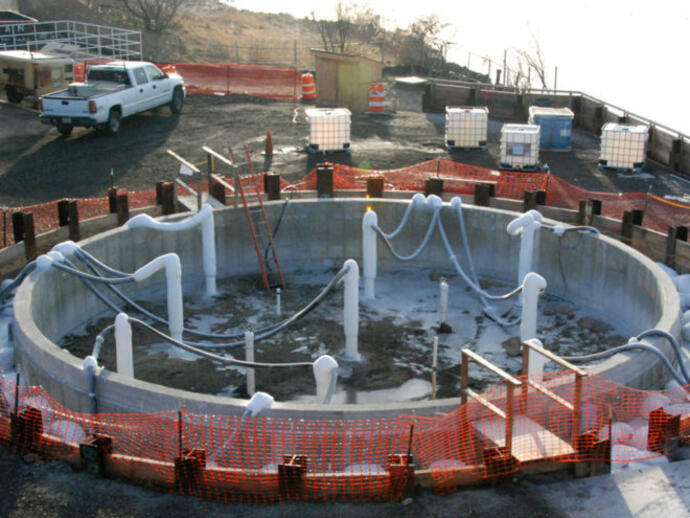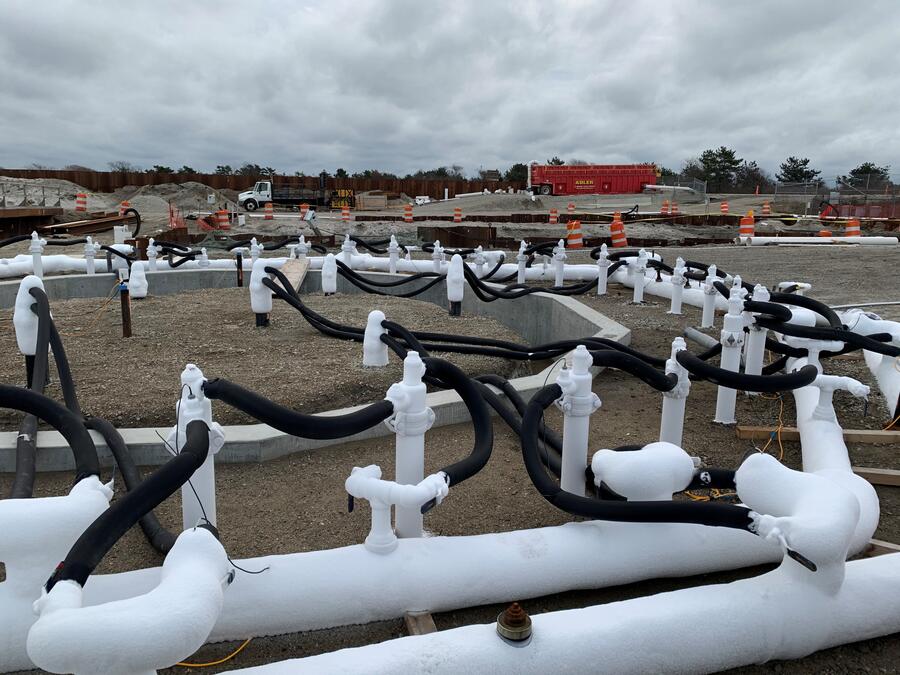Artificial ground freezing is a technique used in constructing shafts, mines, and tunnels to provide temporary earth support and groundwater control when other conventional methods such as dewatering, shoring, grouting, or soil mixing are not feasible.
Get in touch

- T:
- 920-889-0190
Joseph Sopko, Ph.D., P.E., received his BSc, MSc, and PhD in Civil Engineering from Michigan State University. He has more than 40 years of experience in all aspects of design and laboratory testing programs related to underground construction projects. He develops business opportunities related to geotechnical construction, specifically ground freezing and groundwater control, and routinely provides on-site project management and quality control programs. He has designed and managed ground freezing projects worldwide, including forming laboratory-frozen soil testing programs, numerical modeling, and on site quality control and assurance. He has completed over 100 projects, including deep shafts, tunnel adits, cross passages, and emergency TBM recoveries.
Dr. Sopko specializes in ground freezing for civil and mining projects worldwide. He is also an adjunct professor at Michigan State University. He served with the U.S. Air Force as an engineering officer in Afghanistan and Operation Deep Freeze in Antarctica.

Ground freezing also provides regional groundwater barriers around mining operations for gold and other minerals, oil sands, or oil shales. It is often referred to as ground freezing, soil freezing, or freeze wall. Ground freezing involves drilling, installing a series of relatively closely spaced pipes, and circulating a coolant through these pipes. The refrigerated coolant extracts heat from the ground, converting the soil pore water to ice, resulting in an extremely strong, impermeable material. It is the most positive ground improvement method used in the underground construction and mining industries.
Ground freezing is successful when completed by experienced contractors who have the required specialized equipment. It is an interactive process requiring advanced engineering, accurate drilling, as well as custom-made refrigeration and instrumentation equipment.
Ground freezing applications
Deep shaft excavation
Deep shafts are the most common application of ground freezing. The freeze pipes are drilled and installed around the perimeter of the proposed shaft to the required depth. The coolant is circulated until a frozen zone from 1 to 10 meters is formed. The inside of the shaft is then excavated and lined, and the freezing system is turned off.
Tunneling
Ground freezing is used extensively in the tunneling industry. Tunnel applications use several different approaches. The most common involves horizontally drilling the freeze pipes around the tunnel perimeter, similar to the frozen shaft approach. This horizontal configuration is used to tunnel beneath roads or railways or to construct safety cross passages between two existing tunnels. Another method of constructing tunnels is to freeze the entire alignment solid and mine through a frozen mass of soil. This approach is often coupled with the Sequential Excavation Method (SEM) and used for small-diameter tunnel adits.
Tunnel Boring Machines (TBMs)
Ground freezing is also used with Tunnel Boring Machines (TBMs). The ground in front of or around the TBM can be frozen in advance to create a pre-planned safe haven for tunneling interventions or used in emergencies for TBM repair.
Groundwater isolation in mining operations
Ground freezing has been proposed for regional groundwater barriers up to 10km long to isolate groundwater from mining operations instead of large-scale dewatering operations with environmental consequences or requiring complex and expensive treatment operations.
